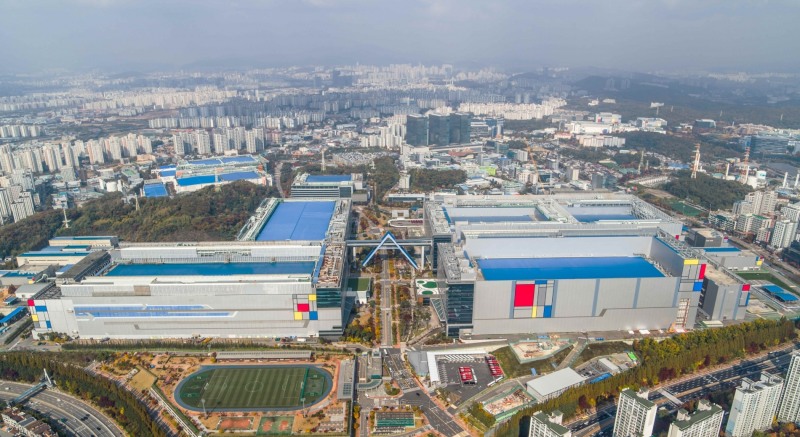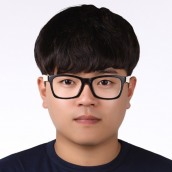 이미지 확대보기
이미지 확대보기Samsung Electronics has surpassed KRW 10 trillion in quarterly operating profit for the first time in seven quarters, thanks to strong performance in its memory business, including high-bandwidth memory (HBM), but its foundry and system LSI businesses, excluding memory, remain sluggish. This year's semiconductor relief pitcher Jeon Young-hyun Vice Chairman of the DS Division, is also ordering the restoration of competitiveness in each business. Samsung Electronics plans to focus on normalization by updating its foundry process, expanding orders, and diversifying its system LSI product lineup.
According to Samsung Electronics on Monday, the DS (Device Solution) Division, which is in charge of the semiconductor business, posted sales of 28.56 trillion won and operating profit of 6.45 trillion won in the second quarter of this year. The operating profit was about 3.4 times higher than the previous quarter and accounted for 61.8 percent of Samsung Electronics' total operating profit (10.44trillion won) in the second quarter. Thanks to the expanding profitability of the DS division, Samsung Electronics has surpassed KRW 10 trillion in quarterly operating profit for the first time in about seven quarters.
The growth of the DS segment was led by D-RAM memory such as HBM. "Memory accounted for 76.1% of the DS segment's sales," said Samsung Electronics, adding, "Demand for generative AI-oriented memory products such as DDR5, server SSDs, and HBM continued to expand, resulting in solid performance."
In the second half of the year, Samsung Electronics plans to accelerate growth by expanding the supply of HBM products. The company will focus on expanding HBM production capacity and increase sales of its fifth-generation product, HBM3E, to gain market share. Samsung is currently conducting performance tests to deliver products to Nvidia, a major HBM customer, and is expected to begin full-scale mass production in the third quarter.
However, the foundry and system LSI segments have not yet emerged from the slump. Samsung Electronics does not disclose performance by business unit. According to industry analysts, Samsung Electronics' foundry business lost about 1 trillion won last month due to a defective wafer issue. Last year's system LSI is also expected to record a deficit of KRW 1 trillion annually, although the new "Exynos 2400" in this year's Galaxy S24 series is leading a positive response.
For this reason, Vice Chairman Jeon Young-hyun also warned against premature self-congratulation in an internal announcement shortly after the earnings announcement. "The improvement in the second quarter's performance was due to the improvement of the market rather than the recovery of intrinsic competitiveness," he said. "If we rely on the market without recovering intrinsic competitiveness, we will inevitably fall into a vicious cycle where the same situation as last year will be repeated."
In July, Vice Chairman Jeon Young-hyun, who has been leading the DS division since the resignation of former CEO Kyung Kye-hyun in May, reorganized the HBM business team and reassigned employees from the existing advanced packaging business team to the foundry division based on their expertise. This was done to focus on strengthening foundry competitiveness and normalizing the system LSI business.
Under the leadership of Vice Chairman Young-Hyun Jeon, the foundry and system LSI divisions are striving to strengthen their competitiveness. First, the foundry division has recently reorganized its portfolio to focus on higher-margin businesses, including expanding its high-performance computing (HPC) customers. HPC is more profitable than Samsung's mobile-focused revenue streams because computers require expensive semiconductors to perform high-performance computations with AI.
"The foundry doubled the number of HPC customers year-on-year due to the expansion of orders for sub-5 nanometer leading-edge processes," Samsung Electronics said on its Q2 earnings call, adding, "By 2028, the number of HPC customers will quadruple and sales will increase more than ninefold."
System LSI is focusing on expanding its mobile component suppliers, and its flagship product, Exynos, is expected to secure new customers in the second half of the year. According to the industry, Exynos is expected to be installed in Google's smartphone 'Pixel'. Samsung Electronics also mentioned in its Q2 call that it will "supply new APs (application processors) to new models of US customers in the second half of the year," although it did not reveal the exact customer.
"We have major products and technologies related to computing, communication, camera, and display, which are the core technologies for on-device AI," said Kwon Hyung-Seok, managing director of Samsung Electronics' System LSI Division. "Of the 28 core components in the flagship smartphones of major customers released this year, about 20 are our products. "That's up from about 10 last year," he said, "and we're looking to increase that number even further next year, to more than 20 components."
Kim JaeHun (rlqm93@fntimes.com)
가장 핫한 경제 소식! 한국금융신문의 ‘추천뉴스’를 받아보세요~
데일리 금융경제뉴스 Copyright ⓒ 한국금융신문 & FNTIMES.com
저작권법에 의거 상업적 목적의 무단 전재, 복사, 배포 금지








![‘AI 승부수’ 던졌는데…‘펨토셀(초소형 기지국)’ 걸려 넘어진 KT [Z-스코어 : 기업가치 바로 보기]](https://cfnimage.commutil.kr/phpwas/restmb_setimgmake.php?pp=006&w=284&h=214&m=5&simg=2025120722444001671dd55077bc221924192119.jpg&nmt=18)










